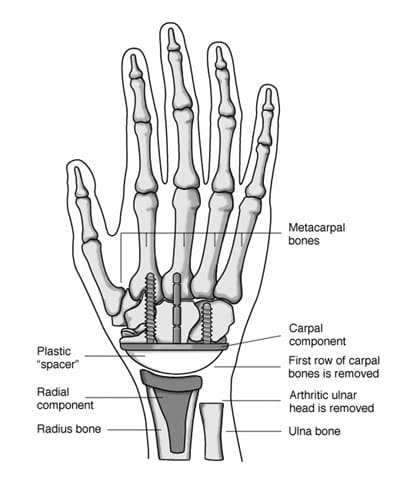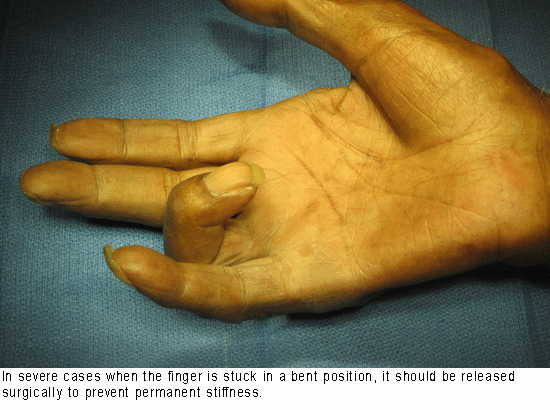When you fall forward, your natural response is to put your hands out in front to catch yourself. As you land on your palm, your wrist bends backwards, which can stretch and perhaps tear the ligaments that connect bone to bone within the joint. The resulting injury is a sprain.
Signs and symptoms
Signs and symptoms of a wrist sprain may vary in intensity and location, depending on the degree of injury. Indications of a wrist sprain include:
- Swelling in the wrist
- Pain at the time of the injury
- Persistent pain when you move the wrist
- Bruising or discoloration of the skin
- Tenderness at the injury site
- A feeling of popping or tearing inside the wrist
- A warm or feverish feeling to the skin
Degrees of injury
Wrist sprains are graded, depending on the degree of injury to the tissues.
- Grade 1 or mild sprains occur when the ligaments are stretched, but not torn.
- Grade 2 or moderate sprains occur when some of the ligaments are torn. Grade 2 sprains may involve some loss of function.
- Grade 3 or severe sprains occur when there is a complete tear all the way through the ligament. These are significant injuries that require medical or surgical care to ensure recovery. As the ligament tears away from the bone, it may also take a small chip of bone with it, resulting in an avulsion fracture.
If you have any doubts about the severity of your injury, arrange to have a doctor examine your wrist. Sometimes, a sprain can have only mild swelling but still be serious enough to require surgery. To avoid problems later, proper diagnosis and treatment is important.
Diagnosing a wrist sprain
Your doctor will review your symptoms and ask how the injury happened. He or she will also ask about any numbness in your hand as well as about your medical and orthopaedic history, especially any previous injuries to your hand or wrist. The physical exam will cover your entire arm and hand to ensure that there are no other injuries. Tenderness in certain areas may suggest a broken bone.
If a severe sprain is suspected, your doctor will likely order X-rays. In some cases, a magnetic resonance image (MRI) or computed tomography (CT) scan may also be ordered.
Treating a wrist sprain
Mild wrist sprains can be usually be treated at home with the RICE protocol.
- Rest the joint for at least 48 hours.
- Ice the injury to reduce swelling. Do not apply ice directly to the skin. Use an ice pack or wrap a towel around the ice or a package of frozen vegetables. Apply ice for about 20 minutes at a time.
- Compress the swelling with an elastic bandage.
- Elevate the injury above the level of your heart.
You may also wish to take a pain reliever such as aspirin or ibuprofen. If pain and swelling persist for more than 48 hours, however, see a doctor. Moderate sprains may need to be immobilized with a wrist splint for 7 to 10 days. Severe sprains may require surgery to repair the fully torn ligament. Afterwards, you will need a period of rehabilitation and exercises to strengthen the wrist and restore motion. A wrist sprain can take anywhere from 2 to 10 weeks to heal completely, depending on the severity of the sprain.
Prevention
Because wrist sprains usually result from a fall, be careful if you must walk in wet or slippery conditions. Wrist sprains also occur during sports such as skating, skateboarding, and skiing. You can help prevent sports-related wrist sprains by wearing wrist guard splints or protective tape to support the wrist and prevent it from bending too far backwards. If you ski, try to remember to drop your poles during a fall to prevent wrist sprains.


